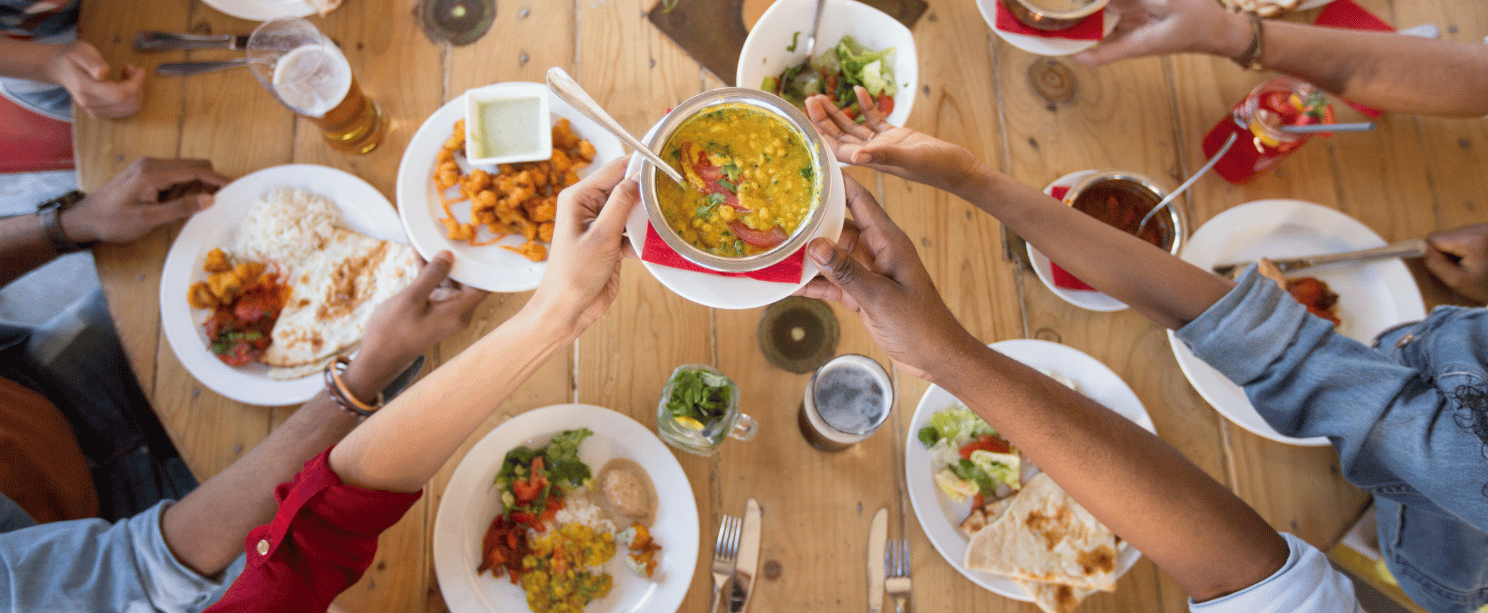
Managing diabetes doesn’t mean giving up delicious and diverse meals. Many global cuisines naturally align with a diabetes diet by emphasizing whole foods, fiber-rich ingredients, lean proteins, and healthy fats. The key is understanding the key components of many traditional diets and learning how to bring them to your own table (or order them abroad). Here, we'll review some useful information on nutrient-dense global cuisines with slower glycemic impacts, along with some of the best countries to visit for healthy, delicious meals.
Key Aspects of Nutrient-Dense Foods
No matter where you are in the world or what type of cuisine you feel like cooking at home, nutrient-dense meals have a few things in common. Some of the most important things to look for in any recipe to help with managing diabetes include the following:
- Lean Protein — Recipes high in lean protein can help you feel full, manage your weight, and decrease the amount of saturated fat in your meals.
- Fiber — Eating foods high in fiber is a great way to lower cholesterol and decrease blood glucose levels while increasing nutrients and satiety after a meal.
- Healthy Fats — Healthy fats from plant-based oils and fish enhance flavor in dishes while also helping with good cholesterol (HDL cholesterol).
- Whole Grains — Whole grains can help regulate blood sugar, as they slow down the absorption of sugar into the bloodstream.
Nutrient-dense recipes are always a great option for managing diabetes, but they can look different depending on which fruits, vegetables, and grains are used.
Benefits of Trying New Cultural Foods
Exploring new cultural foods is more than just a culinary adventure—it’s an opportunity to expand your palate, learn about different traditions, and even improve your overall well-being. When living with diabetes, bringing cultural foods into your meal plan can help you explore new spices and avoid falling into a redundant routine. Luckily, there are plenty of nutritious recipes from all corners of the globe. So, whether you're planning a dinner party and want to impress some friends or just looking for your new favorite dish, why not get creative?
Global Recipes for People with Diabetes
You don't have to buy an international plane ticket to enjoy global cuisines. All it takes is a bit of time, some research, and finding the right ingredients. Some suggestions from the American Diabetes Association (ADA) and other great contributors include:
- Pakistani Besan Chilla
- Curried Chickpea Soup with Roasted Vegetables
- Greek Vegetable Pita Pizza
- "Wonton" Soup with Bok Choy
- Baghali Pillow with Quinoa
- Ash-eh Reshteh
- Beef Stir-Fry with Baby Bok Choy
- Vegetarian Stuffed Cabbage
- Italian Mussels and Pasta
- Okonomiyaki
- Black Sticky Rice
- Spicy Jerk Shrimp
- Moroccan Spiced Turkey Burger
These are a few great recipes to get you started and expand your palate while at home.
Nutrient-Dense Global Cuisines: What to Order When Traveling Abroad
While cooking at home can be a fun way to add variety to your diabetes management, what about when you're actually visiting a new country? Knowing what to order can be complicated, as some vegetables or carbohydrates may not be available or common in the US. However, eating local food is often much better than finding one or two American restaurants and sticking to those. Food also connects you to the community, which can be an excellent chance to connect with locals and enhance your travel. Just make sure you have everything you need when traveling with diabetes. Some of the countries with the best food to help you manage your diabetes include:
India
India’s traditional diet, particularly in South and North Indian cuisine, features high-fiber whole grains like millet, barley, and whole wheat. Meals often include lentils, legumes, and vegetables, which help regulate blood sugar. Additionally, Indian cuisine uses anti-inflammatory spices such as turmeric, cinnamon, and fenugreek, which may support better glucose control. However, deep-fried and sugar-heavy dishes should be consumed in moderation. And you should always ensure you eat things carefully, as travelers may not have the same strength in handling some street foods without getting sick.
Japan
Japan offers a diet rich in fresh fish, seaweed, tofu, and vegetables, with minimal added sugars and refined carbs. Traditional Japanese meals also focus heavily on portion control, such as serving smaller portions of rice and incorporating fermented foods like miso, which support gut health.
Malaysia
Malaysia offers a diverse and flavorful cuisine that can be adapted for diabetes management. Many traditional Malaysian dishes use fresh vegetables, lean proteins, and spices that support metabolic health. Meals often include ingredients like turmeric, ginger, and lemongrass, which have anti-inflammatory properties. Dishes such as grilled fish, stir-fried greens, and soups made with coconut milk in moderation provide a balance of nutrients. While rice and noodles are common staples, choosing brown rice or reducing portions can help maintain stable blood sugar levels.
Greece
Greek cuisine features abundant vegetables, legumes, and lean proteins like fish and chicken, often cooked with olive oil, rich in healthy fats. Whole grains such as barley and bulgur provide sustained energy without causing rapid blood sugar spikes. However, be mindful of extra savory dishes, which may be high in carbs and unhealthy fats.
Italy
Italian cuisine typically includes whole grains like farro and whole wheat pasta, fresh tomatoes, olive oil, and lean proteins. While Italian food is often associated with refined carbs, many traditional dishes prioritize balance and portion control, making them suitable for diabetes management.
Turkey
Turkey’s cuisine is also highly nutrient-dense, emphasizing grilled meats, yogurt-based dishes, and fiber-rich legumes like lentils and chickpeas. Many Turkish meals incorporate anti-inflammatory spices and herbs, contributing to overall health while stabilizing blood sugar levels.
Thailand
Thailand offers many naturally low-carb dishes, such as papaya salad (Som Tam) and grilled seafood, rich in fresh vegetables, herbs, and lean proteins. While Thai cuisine often includes coconut milk, it provides healthy fats when used in moderation. Opting for traditional dishes with minimal added sugars helps stabilize blood sugar levels. Just be mindful of the amount of chili you order, as Thai people tend to like things spicy!
Vietnam
Vietnamese cuisine is light and fresh, featuring a variety of herbs, vegetables, and lean proteins like shrimp, fish, and tofu. Many Vietnamese dishes, such as pho, can be modified by replacing rice noodles with zucchini noodles or other low-carb alternatives. Avoiding heavy sauces and deep-fried foods can make this cuisine even better for diabetes management. Healthy eating is common in Southeast Asian countries, but some dishes may also be quite high in sodium.
Korea
Korean cuisine, when focused on its traditional elements, can also benefit people with diabetes. Fermented foods like kimchi promote gut health, while high-protein, low-fat options like tofu, seafood, and lean meats help maintain balanced blood sugar levels. Whole grains such as barley and brown rice are often incorporated into meals, and avoiding deep-fried or sugar-heavy dishes can make Korean cuisine an even better choice.
Ethiopia
Ethiopian cuisine is naturally great for diabetes management due to its reliance on fiber-rich injera, a fermented flatbread made from teff. Many traditional Ethiopian meals include lentils, chickpeas, and vegetables, all of which provide slow-digesting carbohydrates. The use of anti-inflammatory spices like ginger and garlic also supports overall health while keeping blood sugar levels steady.
Mexico
Traditional Mexican cuisine, when focused on whole foods, is another excellent option for diabetes management. Dishes incorporating fiber-rich beans, avocados, and whole corn tortillas provide essential nutrients without spiking blood sugar. Grilled meats and fresh vegetables are everyday staples (think fajitas), and avoiding refined carbs and sugary drinks makes this diet even healthier. Still, plenty of Mexican dishes are also high in carbs and unhealthy fats, so it's important to understand cooking methods and find healthy options.
To help you get the most out of your travels, Byram Healthcare carries a wide range of diabetes products. With access to comprehensive support and educational materials, we’re here to help you manage your diabetes regardless of where you are in the world.



